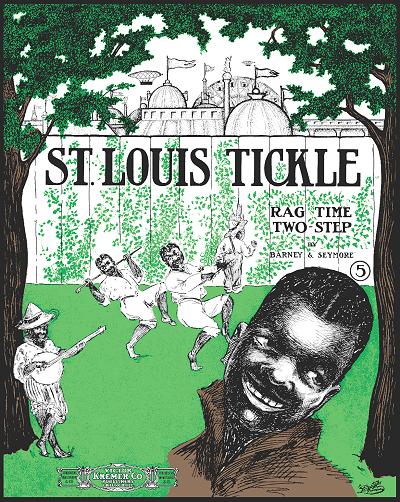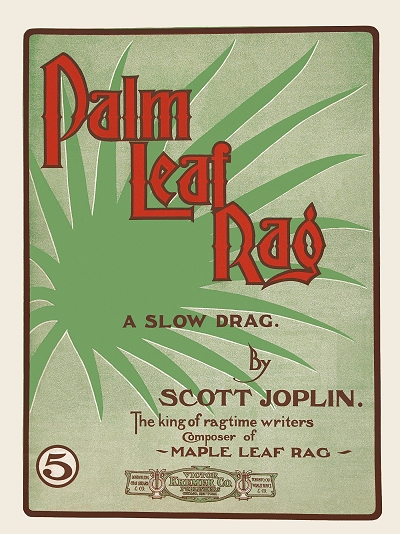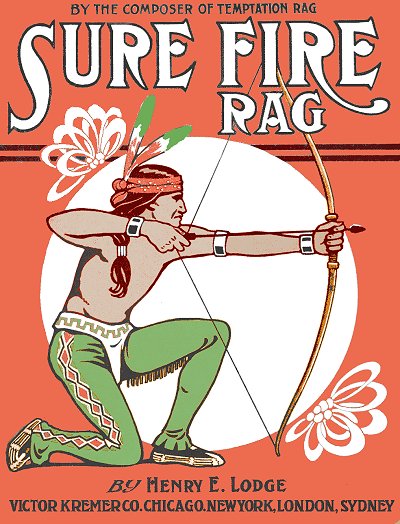Victor Kremer as much as any similar entrepreneur of his time certainly exemplified the immigrant's dream to make good themselves in a new country, and in this case to even literally change the face of part of it. Born in Alsheim, Germany (referred to as Prussia at that time), to Victor Albert Kremer and Theresa von Schwerdt, he spent several years there and in nearby Worms, Germany, where he graduated from high school in 1889. Victor then studied medicine at the University of Heidelberg, graduating in the class of 1892. During his last year at the university he also served in the German Army, becoming a lieutenant of the Army Reserves. Kremer came to America when he was 22 years old, shown as arriving in Baltimore, Maryland on November 23, 1892 from Bremen, his destination being Chicago. His occupation was listed simply as "merchant." Once in Chicago, Victor took up residence for many years with his cousin, music publisher Alfred Solman, and his family. His first job in that city, given his medical degree, was as a druggist. Within a year he was a registered pharmacist, and by 1896, when he was naturalized as an American citizen, ran three of his own pharmacies on the north side of Chicago. Kremer, who likely worked with Solman at some point, set out to be a publisher as well, and in 1897 set up shop, issuing at least one work by his cousin, who was also a composer. He soon had distribution branches in as many as 14 cities in the US and abroad.
During his last year at the university he also served in the German Army, becoming a lieutenant of the Army Reserves. Kremer came to America when he was 22 years old, shown as arriving in Baltimore, Maryland on November 23, 1892 from Bremen, his destination being Chicago. His occupation was listed simply as "merchant." Once in Chicago, Victor took up residence for many years with his cousin, music publisher Alfred Solman, and his family. His first job in that city, given his medical degree, was as a druggist. Within a year he was a registered pharmacist, and by 1896, when he was naturalized as an American citizen, ran three of his own pharmacies on the north side of Chicago. Kremer, who likely worked with Solman at some point, set out to be a publisher as well, and in 1897 set up shop, issuing at least one work by his cousin, who was also a composer. He soon had distribution branches in as many as 14 cities in the US and abroad.
 During his last year at the university he also served in the German Army, becoming a lieutenant of the Army Reserves. Kremer came to America when he was 22 years old, shown as arriving in Baltimore, Maryland on November 23, 1892 from Bremen, his destination being Chicago. His occupation was listed simply as "merchant." Once in Chicago, Victor took up residence for many years with his cousin, music publisher Alfred Solman, and his family. His first job in that city, given his medical degree, was as a druggist. Within a year he was a registered pharmacist, and by 1896, when he was naturalized as an American citizen, ran three of his own pharmacies on the north side of Chicago. Kremer, who likely worked with Solman at some point, set out to be a publisher as well, and in 1897 set up shop, issuing at least one work by his cousin, who was also a composer. He soon had distribution branches in as many as 14 cities in the US and abroad.
During his last year at the university he also served in the German Army, becoming a lieutenant of the Army Reserves. Kremer came to America when he was 22 years old, shown as arriving in Baltimore, Maryland on November 23, 1892 from Bremen, his destination being Chicago. His occupation was listed simply as "merchant." Once in Chicago, Victor took up residence for many years with his cousin, music publisher Alfred Solman, and his family. His first job in that city, given his medical degree, was as a druggist. Within a year he was a registered pharmacist, and by 1896, when he was naturalized as an American citizen, ran three of his own pharmacies on the north side of Chicago. Kremer, who likely worked with Solman at some point, set out to be a publisher as well, and in 1897 set up shop, issuing at least one work by his cousin, who was also a composer. He soon had distribution branches in as many as 14 cities in the US and abroad.One of Victor's first pieces in print was a set of waltzes by future publisher William C. Polla, who would contribute a few more interesting works over the next three or so years. By 1899 he was already taking in cakewalks and rags, starting with the successful Big Foot Lou by Joseph Gearen. One of the pieces, it is not clear which, resulted in, according to reports in several newspapers, "The first rag time suit in history" in mid-1899. It was brought by publisher Frederick "Kerry" Mills against Kremer, saying that the latter had infringed on the copyright of the title At A Georgia Campmeeting composed by Mills with a similarly-titled Campmeeting song. There was no infringement of the contents of the piece alleged, however. In the end it was settled in Kremer's favor, owing to the fact that many historical pieces, and even contemporary ones, shared the same title, and copyright law did not allow exclusive use of just the title. Trade-mark law covered that, but only for durable or tangible products continually available, not song titles. In the 1900 census, Kremer showed as single, still living with Solman, his wife of nine years, Eugenia (or Eugenie) of Magdeburg, Germany, and their two children. Alfred would likely soon regret this living situation.
Before long, the Victor Kremer Company was becoming known in Chicago and beyond for some fine syncopated output, albeit mostly cakewalks, having drawn in some fairly decent talent, including Theron C. Bennett in 1902 with his Carnival Times. Bennett had been hired as a Kremer field salesman for the American South, but turned in a number of his own good pieces from the road as well. A follow up piece was Satisfied: An Emotional Drag which further cemented the good reputation of both composer and publisher. From 1898 to 1910 Kremer remained at the helm of the company, which also published songs. Ironically, where most publishers of the era had better luck and higher sales with hit songs than they did with rags, it was mostly high quality rags that came from the Kremer house, with very little noteworthy song output in spite of a larger quantity of the latter. One early score for him, and the first true rag published by the company, was Scott Joplin's Palm Leaf Rag in 1903. This was submitted during a period when the composer was in one of his tussles with publisher John Stark. In 1901 Alfred Solman and his wife separated, then divorced, and Kremer married Eugenia on July 21, 1902, taking on the Solman's children Curt and Lucile as well. It appears that Alfred may not have remarried, still showing as divorced in the 1930 enumeration taken in New York City.
Ironically, where most publishers of the era had better luck and higher sales with hit songs than they did with rags, it was mostly high quality rags that came from the Kremer house, with very little noteworthy song output in spite of a larger quantity of the latter. One early score for him, and the first true rag published by the company, was Scott Joplin's Palm Leaf Rag in 1903. This was submitted during a period when the composer was in one of his tussles with publisher John Stark. In 1901 Alfred Solman and his wife separated, then divorced, and Kremer married Eugenia on July 21, 1902, taking on the Solman's children Curt and Lucile as well. It appears that Alfred may not have remarried, still showing as divorced in the 1930 enumeration taken in New York City.
 Ironically, where most publishers of the era had better luck and higher sales with hit songs than they did with rags, it was mostly high quality rags that came from the Kremer house, with very little noteworthy song output in spite of a larger quantity of the latter. One early score for him, and the first true rag published by the company, was Scott Joplin's Palm Leaf Rag in 1903. This was submitted during a period when the composer was in one of his tussles with publisher John Stark. In 1901 Alfred Solman and his wife separated, then divorced, and Kremer married Eugenia on July 21, 1902, taking on the Solman's children Curt and Lucile as well. It appears that Alfred may not have remarried, still showing as divorced in the 1930 enumeration taken in New York City.
Ironically, where most publishers of the era had better luck and higher sales with hit songs than they did with rags, it was mostly high quality rags that came from the Kremer house, with very little noteworthy song output in spite of a larger quantity of the latter. One early score for him, and the first true rag published by the company, was Scott Joplin's Palm Leaf Rag in 1903. This was submitted during a period when the composer was in one of his tussles with publisher John Stark. In 1901 Alfred Solman and his wife separated, then divorced, and Kremer married Eugenia on July 21, 1902, taking on the Solman's children Curt and Lucile as well. It appears that Alfred may not have remarried, still showing as divorced in the 1930 enumeration taken in New York City.From the publication of Palm Leaf Rag on, the rags started pouring out the door from Kremer's office at 108-110 Randolph Street. Among the most memorable top-sellers from the catalog was the St. Louis Tickle by Bennett, composed specifically for the 1904 Lewis and Clark Exposition in St. Louis. It was largely noted for its use of the notorious Funky Butt/Judge Fogarty melody that in some towns could land a person in jail simply for whistling it. Yet it still got plenty of play at the fair, and a number of recordings and piano rolls over the next several years. Lyrics were even added in 1905, although family friendly ones, which for a time perhaps helped to erase the notorious reputation of the donor tune. The Cannon Ball followed in 1905, penned by Joseph C. Northup and arranged by Thomas R. Confare, another local Chicago musician. It was also a lasting seller, and one of the earliest recorded rags as well. Bennett triumphed once again with Sweet Pickles Rag in 1907. Another sure fire hit was Sure Fire Rag by Thomas Henry Lodge, published in 1910. When Kremer opened a branch in New York City, he hired away William Polla from the Remick corporation to manage it and obtain some material from east coast writers as well. Victor and Eugenie had their own daughter, Marie, in 1906. By the 1910 census the children all show Kremer as their last name, and the family also had a house servant. He was still listed as a music publisher in Chicago.
Kremer was well-known among musicians and other publishers in Chicago, and he and his wife were friends with some notables. Among them was Sophie Tucker, who visited their home from time to time. When Marie was extremely sick from diphtheria, Miss Tucker, who was not yet nearly so famous as she would become, helped to care for the little girl, and according to a later newspaper report became an informal "aunt" to Eugenie's daughter. As relayed to the Oakland Tribune, "My baby was ill with diphtheria and in her fever heat kept crying for 'Tante Sophie!' Hearing of it during the matinee performance, as soon as she left the theater where she was then playing, Sophie went to the hospital where my baby was suffering, lay down on the bed alongside of her, and sang cooning lullabies until the little one fell asleep. It proved to be a turning point for the little one and I am in Sophie's debt for life. And she didn't have time to get any supper, just time to get disinfected so she wouldn't carry it to her company - never a thought of herself, and at 8 o'clock she was on the stage again, smiling and joking, and making the people laugh." Marie made a full recovery.
When Marie was extremely sick from diphtheria, Miss Tucker, who was not yet nearly so famous as she would become, helped to care for the little girl, and according to a later newspaper report became an informal "aunt" to Eugenie's daughter. As relayed to the Oakland Tribune, "My baby was ill with diphtheria and in her fever heat kept crying for 'Tante Sophie!' Hearing of it during the matinee performance, as soon as she left the theater where she was then playing, Sophie went to the hospital where my baby was suffering, lay down on the bed alongside of her, and sang cooning lullabies until the little one fell asleep. It proved to be a turning point for the little one and I am in Sophie's debt for life. And she didn't have time to get any supper, just time to get disinfected so she wouldn't carry it to her company - never a thought of herself, and at 8 o'clock she was on the stage again, smiling and joking, and making the people laugh." Marie made a full recovery.
 When Marie was extremely sick from diphtheria, Miss Tucker, who was not yet nearly so famous as she would become, helped to care for the little girl, and according to a later newspaper report became an informal "aunt" to Eugenie's daughter. As relayed to the Oakland Tribune, "My baby was ill with diphtheria and in her fever heat kept crying for 'Tante Sophie!' Hearing of it during the matinee performance, as soon as she left the theater where she was then playing, Sophie went to the hospital where my baby was suffering, lay down on the bed alongside of her, and sang cooning lullabies until the little one fell asleep. It proved to be a turning point for the little one and I am in Sophie's debt for life. And she didn't have time to get any supper, just time to get disinfected so she wouldn't carry it to her company - never a thought of herself, and at 8 o'clock she was on the stage again, smiling and joking, and making the people laugh." Marie made a full recovery.
When Marie was extremely sick from diphtheria, Miss Tucker, who was not yet nearly so famous as she would become, helped to care for the little girl, and according to a later newspaper report became an informal "aunt" to Eugenie's daughter. As relayed to the Oakland Tribune, "My baby was ill with diphtheria and in her fever heat kept crying for 'Tante Sophie!' Hearing of it during the matinee performance, as soon as she left the theater where she was then playing, Sophie went to the hospital where my baby was suffering, lay down on the bed alongside of her, and sang cooning lullabies until the little one fell asleep. It proved to be a turning point for the little one and I am in Sophie's debt for life. And she didn't have time to get any supper, just time to get disinfected so she wouldn't carry it to her company - never a thought of herself, and at 8 o'clock she was on the stage again, smiling and joking, and making the people laugh." Marie made a full recovery.While Victor had a love for music, he was still more of a business man than musician, and when he saw trends changing in both music an publishing around 1910 decided on a change. He abandoned his now famous company late in the year to look for something different. The Victor Kremer Company continued for two or so years without its namesake, but the catalog was soon sold to another publisher who got a wonderful batch of piano rags, some of which were reprinted. Victor himself went to work with the publishing firm House of Laemmle, which was founded by entrepreneur and fellow German immigrant Carl Laemmle. It did not fare well, and by 1912 the firm and Kremer were both gone from Chicago. Laemmle moved to New York and founded the Independent Motion Picture Company where Victor would work for a time both in New York and Los Angeles, with a few sightings in San Diego as well. Carl would soon reincorporate as Universal Pictures and create a shift in the industry starting in 1914. Victor took the family to California around that time, and around 1916 he purchased a large tract of land just north of San Diego in a community called Cardiff, founded by Boston artist turned developer J. Frank Cullen in 1911. Victor may have first come to stay in Southern California when Laemmle started shifting Universal Pictures there from Manhattan to the Los Angeles area. But it may be surmised that Kremer was still working with Laemmle and Universal as late as 1920 as he was found once again in Manhattan during the census working for a film exchange, the branch of the company that distributed movies to theaters. Several pictures under his own name as producer appeared around the country from 1920 to 1922. Curt Kremer would also become a motion picture producer during this period. Only the youngest daughter was left in the Kremer household at the time of the January 1920 census.
By 1921 the Kremers were back in Cardiff, and moving away from the film industry, although Victor's production duties would continue for another year. He started working in the lucrative Southern California real estate market, developing his large Cardiff tract. Victor was combining his love for music, particularly from his native country, with his new profession, and now as the primary developer, he renamed the tract Cardiff By the Sea, reportedly after the famous 1914 song By the Beautiful Sea. His intention was to create a sort of artists' colony for composers, musicians and theatrical people. In what is still known as the Composer District, all of the new streets that did not come from outside of the area were named after famous composers, including [Anton] Rubenstein, [Johann Sebastian] Bach, [Wolfgang Amadeus] Mozart, [Franz] Liszt, [Giuseppe] Verdi, [Frederic] Chopin, [Antonio] Vivaldi, [Joseph] Haydn, [Franz] Schubert, [Gioachino] Rossini, [Johannes] Brahms, and one notable American, [George] Gershwin. Victor was also, for a while, the president of California Clay Products south of Los Angeles.
developing his large Cardiff tract. Victor was combining his love for music, particularly from his native country, with his new profession, and now as the primary developer, he renamed the tract Cardiff By the Sea, reportedly after the famous 1914 song By the Beautiful Sea. His intention was to create a sort of artists' colony for composers, musicians and theatrical people. In what is still known as the Composer District, all of the new streets that did not come from outside of the area were named after famous composers, including [Anton] Rubenstein, [Johann Sebastian] Bach, [Wolfgang Amadeus] Mozart, [Franz] Liszt, [Giuseppe] Verdi, [Frederic] Chopin, [Antonio] Vivaldi, [Joseph] Haydn, [Franz] Schubert, [Gioachino] Rossini, [Johannes] Brahms, and one notable American, [George] Gershwin. Victor was also, for a while, the president of California Clay Products south of Los Angeles.
 developing his large Cardiff tract. Victor was combining his love for music, particularly from his native country, with his new profession, and now as the primary developer, he renamed the tract Cardiff By the Sea, reportedly after the famous 1914 song By the Beautiful Sea. His intention was to create a sort of artists' colony for composers, musicians and theatrical people. In what is still known as the Composer District, all of the new streets that did not come from outside of the area were named after famous composers, including [Anton] Rubenstein, [Johann Sebastian] Bach, [Wolfgang Amadeus] Mozart, [Franz] Liszt, [Giuseppe] Verdi, [Frederic] Chopin, [Antonio] Vivaldi, [Joseph] Haydn, [Franz] Schubert, [Gioachino] Rossini, [Johannes] Brahms, and one notable American, [George] Gershwin. Victor was also, for a while, the president of California Clay Products south of Los Angeles.
developing his large Cardiff tract. Victor was combining his love for music, particularly from his native country, with his new profession, and now as the primary developer, he renamed the tract Cardiff By the Sea, reportedly after the famous 1914 song By the Beautiful Sea. His intention was to create a sort of artists' colony for composers, musicians and theatrical people. In what is still known as the Composer District, all of the new streets that did not come from outside of the area were named after famous composers, including [Anton] Rubenstein, [Johann Sebastian] Bach, [Wolfgang Amadeus] Mozart, [Franz] Liszt, [Giuseppe] Verdi, [Frederic] Chopin, [Antonio] Vivaldi, [Joseph] Haydn, [Franz] Schubert, [Gioachino] Rossini, [Johannes] Brahms, and one notable American, [George] Gershwin. Victor was also, for a while, the president of California Clay Products south of Los Angeles.Kremer was shown as residing in Cardiff by the Sea in 1930 with his wife and youngest daughter, listed now as a real estate broker. It also appeared that Eugenie's son, Curt Kremer, had become a composer as well, and some of his publications show up under the Edward B. Marks imprint in the 1920s and 1930s. For the 1940 census, taken in Encinitas near San Diego, Victor and Eugenie, both nearing 70, had an assistant living with them, one Thomas Payne from Kentucky. It appears that Thomas was an avocado orchard worker employed by Victor, who listed himself as a "manufacturer of fruit juice products." Other listings in California from the 1930s forward suggest that Victor Kremer still remained a broker perhaps into his early 80s, sometime in the 1950s. The 1950 census showed Victor and Eugenie living in the Rampart District just west of downtown Los Angeles, and he was now the proprietor of a bottling factory of all things. Victor was finally being laid to a well-earned rest at age 87. What he left behind depends on which aspect of his life you look at, but his impact was clearly felt in both music and leisure by a lot of other people, sharing in his American dream.
Thanks go to German researcher Martina Graf who provided a little more information on Victor's origin in Alsheim.

 Published Composers
Published Composers